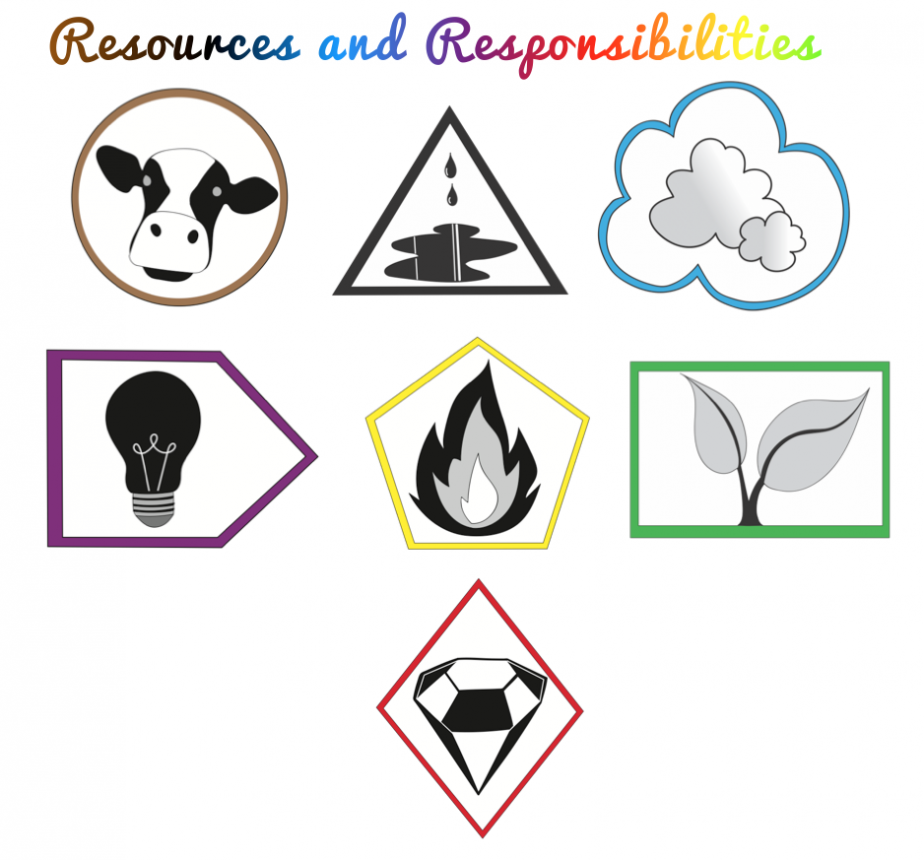Resources and Responsibilities
The books being reviewed and summarised under the theme “Resources and Responsibilities”will help the young readers explore, reflect on and question ideas connected to the resources people use to make products. The books are predominantly fiction that have been chosen because the have characters using resources (made from raw materials) in a variety of ways. Some of the books also deal with the concept of change of responsibility. A challenging idea being thrown into any of our product dealing with raw materials, resources, production and change is the notion that ideas are a raw materials that can be used to produced and develop new products.
Were are in the process of developing resources that are connected to the theme of Resources and Responsibilities and the connected topics of raw Materials, Change, Production and Economics. As always our resources are designed to be transdisciplinary and cross subject boundaries. We believe you cannot look at raw materials, production and resources without considering ethical, environmental and social implications. We have not reviewed ‘The Lorax’ as most teachers and parents are aware of this book and its power to spark debate about the use and misuse of natural resources.
These resources are designed to be used between the Grades 2 and 7.
Resources currently available include
- The Scientific Process – in pictures and with guiding questions
- The DesignProcess – in pictures and with guiding questions
- Needs and Wants Book chat cards
- Tug for Truth- Economics and innovation
- Economics and Innovation Chat Pack
- Flower Power, the importance of diversity
- Rocks and Minerals- Concept Question Cards
A note to our readers
“BCW will now use ‘they – themself’ as a singular, gender-neutral pronoun in all subsequent material generated on our website. Just as the use of ‘he – man’ disappeared women’s voice and identity, use of the binary ‘she – he’ and related pronouns has disappeared and rendered voiceless marginalised groups that do not identify with the ‘he -she’ pronouns. Until some wider grammatical agreement has been reached about what pronouns will be used to embrace the diversity of gender experience, in text we will use ‘they – themself’ in our materials. Given that words/language create reality, using language that is acknowledging and inclusive of all people who identify across a wide gender spectrum is an issue of power, politics, respect and visibility.”
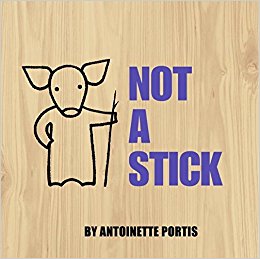
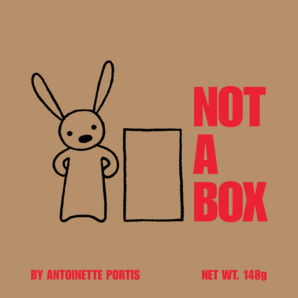
Not A Box; Not A Stick
Author & Illustrator: Antoinette Portis
Publisher: Harper Collins Publishers 2006; 2008
These two books are a great companion for an inquiry into raw materials and the process of change, because they invite the reader to consider how ideas are in fact a raw material, a seed that a new product or idea can be generated from.
The simple illustrations and pattern-like text make them a great book to read aloud or for emerging readers. The two main characters in each book have either a box or a stick and from this point they generate ideas about what possibilities these two tools/resources hold.
Readers can move from the abstract notion that ideas are the raw product to the more concrete idea that plant-based raw materials can be processed and changed into new products. This is where the texts can be a provocation tool for more experienced readers. More experienced readers who have moved beyond decoding strategies to begin looking at synthesis, transfer and application of ideas, will find even simple texts like this can be a boon for developing their deeper thinking and comprehension skills.
These two texts can be used as a jumping off point for exploring what raw material categories exist and what products they can be changed into. These texts could also be used as a conversation starter or a provocation in classes who are doing iTime or who have Maker-Spaces or maker-Time built into their programming.
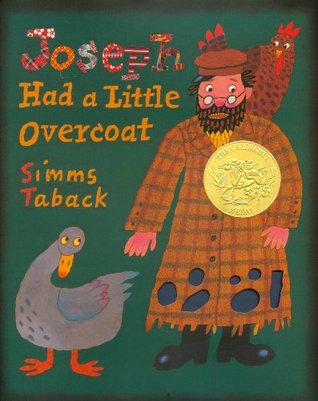
Joseph Had a Little Overcoat
Author & Illustrator: Simms Taback
Publisher: Viking – Penguin Group 1999
I love this book, I love the ideas that sit behind it, I love how it is presented and how it is written. This is a great text for any class doing an inquiry into recycling or repurposing of materials and products.
It is almost a sing-songy text, with vibrant illustrations. Joseph keeps in recycling parts of his overcoat until there is no physical material left, so it becomes story, the catch line is you can make something out of nothing.
The text can be used to explore concepts of change or responsibility. It could also be a jumping off point to begin exploring where fabrics and textiles come from and what processes of change do they go through.
After reading the text, the class could be presented with a basket of older products such as books, shoes, cups, plates, etc. and then engage in possibility thinking about how these products could be up-cycled or repurposed to meet another consumer need or a problem.
Read this book and the Lorax and then invite the students to debate and ponder what might have happened if consumers in the Lorax had followed Joseph’s example, how might the story have changed?
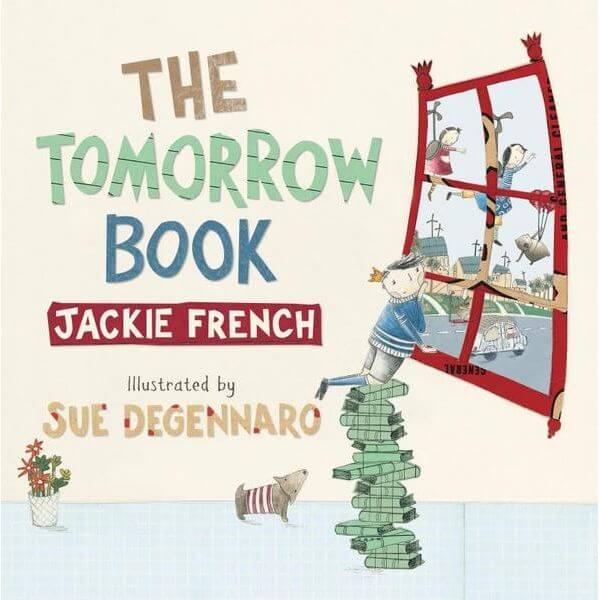
The Tomorrow Book
Author: Jackie French Illustrator: Sue Degennaro
Publisher: Angus & Robertson 2010
This is a lovely text about a small prince and some local kids who decide to take action and explore what can be done to create a sustainable future.
Jackie French creates a narrative that is both informative and fun. In this way she provides an accessible opportunity for her younger readers to think about what they and others can do to create a future that is viable and unpolluted. (It may be worth exploring with readers who are able to deal with more complex ideas, the notions of power and responsibility, so they can see that it is the big producers who really carry the significant portion of responsibility.)
Sue Degennaro makes clever use of recycled materials in her illustrations, while the book itself is printed on recycled paper. This aspect in itself could lead to an interesting inquiry into how publishers, authors and illustrators support or contradict the ‘green’ message in a text.
At first glance this book is about recycle, reuse and reduce in order to create a future where people still have a reasonable quality of life.
If you work backwards from the ideas listed in the book, you and the children in your class can begin identifying what products can be recycled or reused and then look at what raw materials these products would have come from and the change processes they would have under go. From here readers can get a bigger picture of why knowing about raw materials and change processes is important and connected to choice making and responsibility.
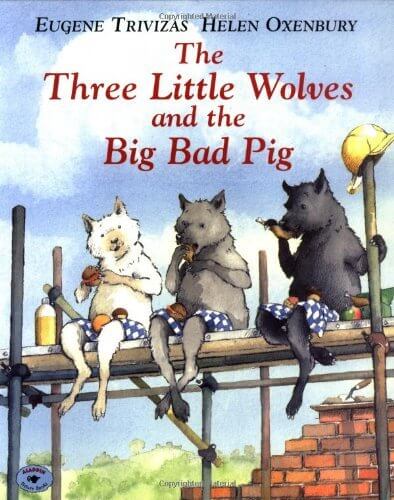
The Three Little Wolves and the Big Bad Pig
Author: Eugene Trivizas Illustrator: Helen Oxenbury
Publisher: Aladdin Paperbacks 1993
This has got to be one of my all time favourite picture books. I love it because of the twists and turns and totally unexpected ending. I love it because it can be used in so many inquiries in the classroom and I love the illustrations.
The illustrations are watercolour and ink and the expressions on the little wolves in the illustrations just add so much more meaning to the text. The story explores the adventures and problem solving choices of the little wolves as they deal with the pigs bullying and obnoxious behaviour.
I have used this book to teach problem solving choices, ideas about force and movement and materials and their uses.
In an inquiry focused on raw materials and the connected products, readers can work backwards from the building materials and explore where these building materials would have come from and the qualities they have that make them useful as a building material.
It the use of a unique building material that eventually overcomes the pigs behaviour and keeps the wolves safe. It is this twist that I love. I often stop reading after the third house is blown up and ask the students to predict what materials the wolves might try next. I have yet to anyone predict the twist in the story.
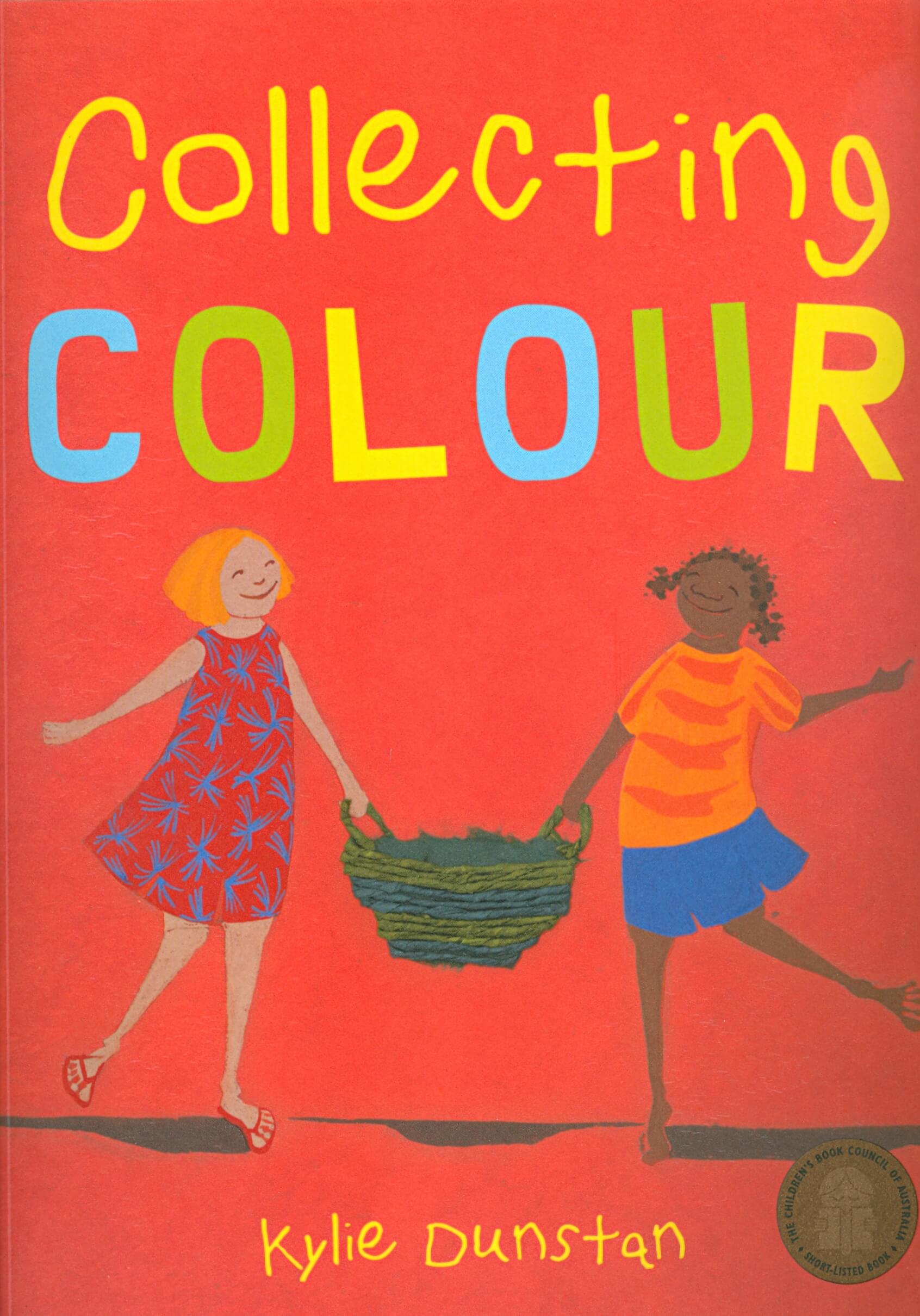
Collecting Colours
Author & Illustrator: Kylie Dunstan
Publisher: A Lothian Children’s Book 2009
This is a great text for exploring some of the uses plants have as raw materials, moving beyond paper products and food. The story centres around two young girls who are going out with one of their mothers to collect pandanus leaves to make a variety of items including mats, bags and baskets. The girls also collect other raw materials from plants for dyeing the pandanus plants.
The reader is taken on a journey that explains how the plant raw materials are gathered and developed into products and resources for colouring products. They can also read about how fish are a source of food. The illustrations are a mix of drawings, photographs and collage and take the reader into the landscape these women and girls are working and gathering plant materials.
It is a generous text in the information it provides and the enjoyment it brings the reader both visually and through the words in the text.
Readers could then be invited to investigate what parts of different plants could be utilised to create or contribute to the development of products we use every day. Those classes who wish to go deeper, could explore the responsibilities producers have in how much natural resources they take and use. An inquiry into the responsibilities consumers have in terms of buying goods that are both developed through good environmental and social practices.
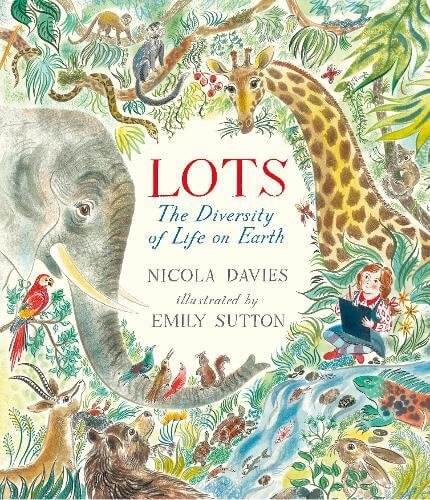
LOTS The Diversity of Life on Earth
Author: Nicola Davies Illustrator: Emily Sutton
Publisher: Walker Books 2018
This book is an example of how interconnected school disciplines are when explored through a conceptual lens. The concepts in this text are bounded by diversity and causation in science, maths and social choices.
Emily Sutton’s pen and ink illustrations make the abstract ideas connected to diversity concrete and easy to explain. Nicola Davies has taken a complex set of ideas and information and made it accessible and relatable to knowledge held by younger readers.
The text has non-fiction information presented in narrative style. The illustrations provide the clue to the narrator being a young girl of about 10 or 12.
It explores ideas about what is diversity among living things and how data about these animals and plants might be collected. It explores scientific ideas about attributes and properties of classification as well as food chains, and briefly introduces ideas about the concept of pattern.
It is a useful text for teachers who want to explore ideas about natural resources and raw materials because it looks at what is happening to plants and animals because of human choices. The powerful punch line at the end, could be used for any age group to begin debating and exploring what are the effects, options and responsibilities about creating a sustainable future.
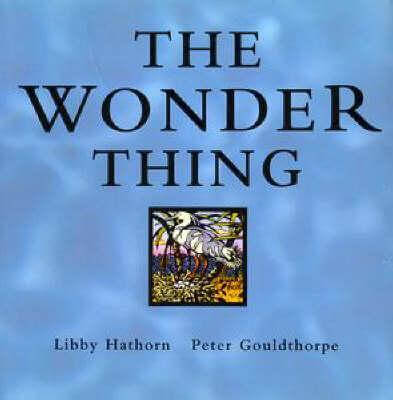
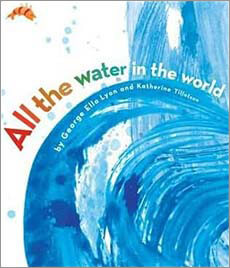
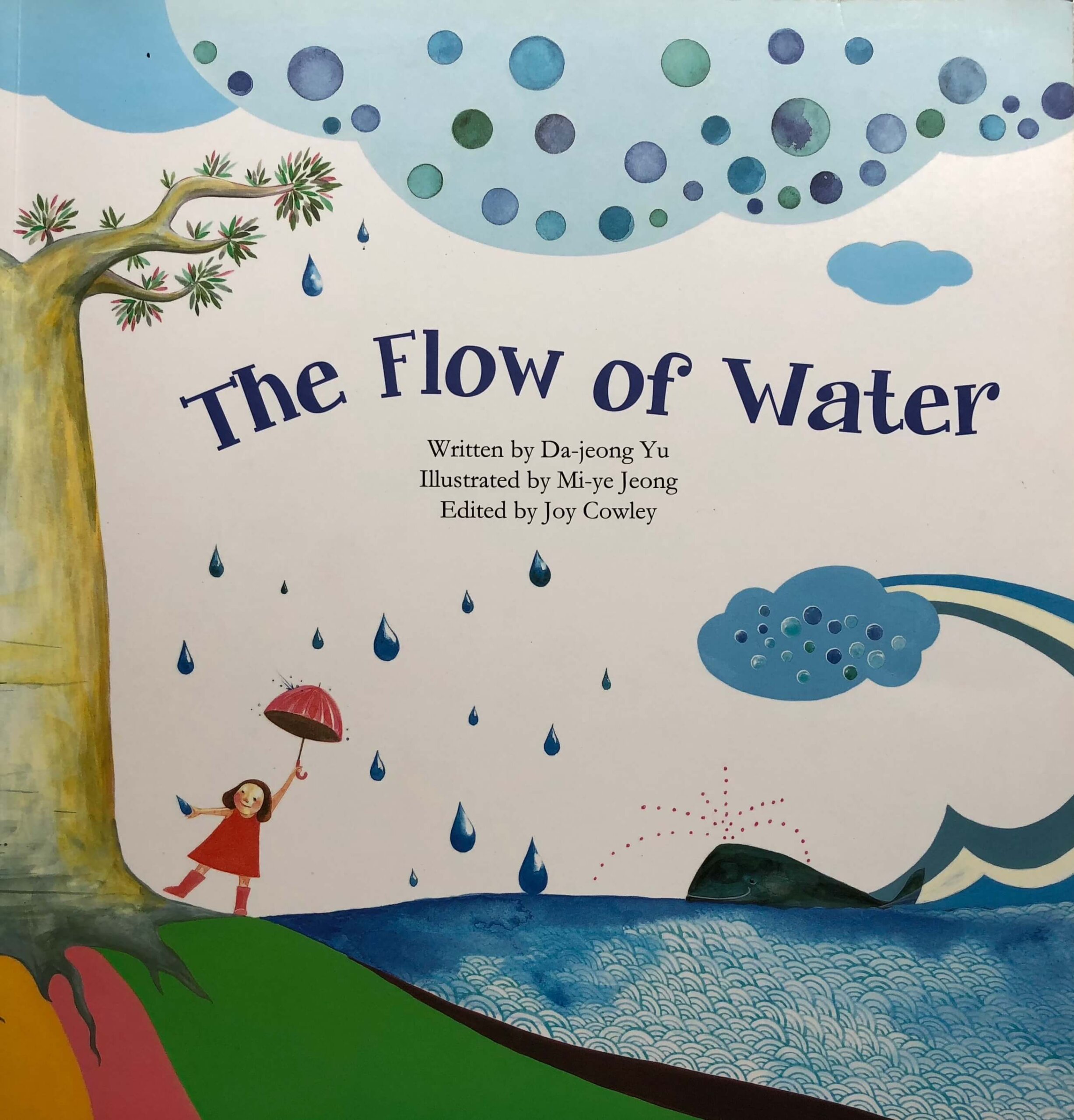
The Wonder Thing
Author: Libby Hawthorn Illustrator: Peter Gouldthorpe
Publisher: Houghton Mifflin Company, 1996
Peter Gouldthorpe’s stunning lino cut images lay out a treasure trail for readers to explore and guess at what the wonder thing might be. Aided by Libby Hawthorn’s use of short phrases, gently guides the reader to think and wonder about the wonder thing. Slowly but surely it will dawn on the reader that the wonder thing is water and it is needed everywhere and critical to so many life forms and processes in communities. The drawings and prose have the reader see that water is plentiful in some places and rare in others, that its valued and cared for by some, but polluted and wasted in other areas.
When doing an inquiry into raw materials, natural resources, or processes of change, it is critical to understand the vital role water plays in all of these things and that it is a limited resource. Sometimes the ideas about water as a resource are overlooked when exploring change processes, but almost all production change processes will involve water at some stage and it is often during the production phase that water is over used or polluted. It is important the we explore with our classes the choices children and families can make to save water, but it is even more critical that children become aware that big business and production companies impact most on water resources. Perhaps our focus should be on our role as critical and analytical consumers as well as the minor infractions of households and their use of water. Exploring water footprints is a critical and vital part of any inquiry into raw materials, production, environmental responsibility and consumerism.
Two other books that explore ideas about water include
All the Water in the World
Author: George Ella Lyon Illustrator: Katherine Tillotson
Publisher: Atheneum Books 2011
This book is also about water, it uses and the responsibility people have in how they use it.
The Flow Of Water
Author: Da-jeong Yu Illustrator: Mi-ye Jeong Edited by: Joy Cowley
Publisher: English Edition Published by Big and Small, 2014
This book is about the water cycle and is a good introduction to ideas of change and process.

The Flow Of Water
Author: Da-jeong Yu Illustrator: Mi-ye Jeong Edited by: Joy Cowley
Publisher: English Edition Published by Big and Small, 2014
Da-jeong Yu has taken the complex ideas connected to the water cycle and presented them in everyday language, making this process of change accessible and understandable by younger readers. Mi-ye Jeong has illustrated the text in ways that will aid younger readers in understanding the text even further.
If I were reading this text to my class, I would use it as a provocation for a unit focusing on change and process. I would not show the students the illustrations while reading. Not because the illustrations aren’t lovely, but because I would read it slowly and have the students draft illustrations for each page that they hear. Inviting the students to draw on their own prior knowledge, I would then have the students use their drafts to complete a class gallery of illustrations to match the text. The illustrations could be displayed and the original text displayed under the new illustrations.
As the unit developed we would revisit the illustrations and add the scientific terms for the water cycle to the different illustrations, as well as adding technical terms connected to change processes.
It is a delightful text and beautifully illustrated, and could be used for a range of student groups and ages. It is also a great text for older readers who have particular language or learning needs, as it is an easy to understand text, and it connects strongly to prior knowledges most readers older than five would have.
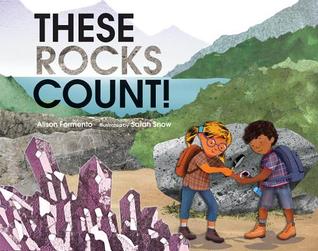
These Rocks Count
Author: Alison Formento Illustrator: Sarah Snow
Publisher: Albert Whitman & Company, 2014
This is a text that has been written and illustrated to teach information. It does have a teachery feel to it, and this is redeemed a little by illustrations that are playful and interesting.
It is a useful text for teaching about rocks, their forms in various parts of the rock cycle and their uses in everyday life, as well as their role in ecosystems. There is a lot of information packed into a small amount of text. The story is written in such a way that younger readers could have their curiosity triggered and become interested in rocks and their role in everyday life.
It is one of a series of books that includes ‘This Tree Counts’, ‘These Bees Count’ and ‘These Seas Count’.
‘The Flow of Water’ book and ‘LOTS, The Diversity of Life on Earth’ are non-fiction texts, presented through narrative forms, as is this book. All three books could also be used to explore and examine the many forms non-fiction texts currently available.

